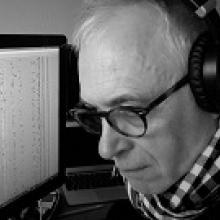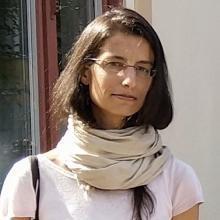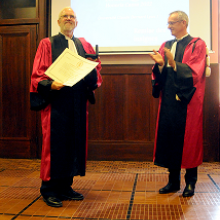Bioinformatics, Phylogeny and Evolutionary Genomics Group
Members
Maîtresse de conférences
UCBL
Tel: 04 72 44 84 87

Professeure des universités
UCBL
Tel: 33 04 26 23 44 76
Doctorante
UCBL
Enseignant-chercheur CPJ
UCBL

Directeur de recherche
CNRS
Tel: 33 04 72 44 62 97

Professeur d'université émérite
UCBL
Tel: 04 72 44 85 60
Ingénieur d'études CDD
CNRS

Directeur de recherche
CNRS
Tel: 33 04 72 43 11 67

Maîtresse de conférences
UCBL
Tel: 33 04 72 43 29 18
Doctorante
UCBL

Chargée de recherche
CNRS
Tel: 33 04 72 44 85 60

Directeur de recherche
CNRS
Tel: 04 72 44 84 87

Chargée de recherche
CNRS
Tel: 04 72 43 13 44

Directeur de recherche
CNRS

Maître de conférences
UCBL
Tel: 04 72 43 35 83

Chargée de recherche
CNRS
Tel: 04 72 44 81 42
Doctorant
CNRS

Directeur de recherche
CNRS
Tel: 33 04 72 44 62 96

Chargée de recherche
CNRS
Tel: 04 72 43 26 28
Doctorant
UCBL

Chercheur invité
UCBL
Our group focuses on two main axes: phylogenomics (i.e. the inference of evolutionary history based on genomics data) and evolutionary genomics (understanding the molecular and population processes that drive genome evolution). We see genomes both as a subject of research (how do genomes evolve, why are they structured the way they are?), but also as a main source of empirical knowledge about the macroevolutionary patterns (what do they tell us about the history of life on Earth?), or about the phenotypes and life-history strategies of organisms. Our works heavily rely on methodological developments (bioinformatics, modeling and statistical inference).
Evolution of genome architecture and expression
Genomes are the result of a long-term evolutionary process, shaped by multiple evolutionary forces. Some genomic features are adaptive (i.e. are beneficial for the fitness of organisms), others result from non-adaptive processes (random drift and biased gene conversion - BGC) or are caused by conflicts between multiple levels of selection (e.g. meiotic drive or the spread of selfish genetic elements). We explore different aspects of genome architecture (base composition landscapes, genome structure and size, impact of transposable elements, …) or functioning (gene expression, lncRNAs, epigenetic landscapes, …), and try to disentangle the relative contribution of adaptive and non-adaptive processes to their evolution. For this purpose, we consider both the molecular mechanisms (mutation, repair, recombination) and the population processes (selection, drift, BGC, …) that shape genetic variation.
Phylogenomics
We are interested in reconstructing the history of life on Earth. This research unfolds along several axes. First, we develop phylogenomic databases of aligned genetic sequences (e.g. BIBI, RiboDB or HOGENOM). Second, we conduct methodological research on how to accurately reconstruct deep phylogenies, infer divergence times, reconstruct ancestral genetic sequences, gene repertoires and life-history traits. This methodological work is translated into publicly available software programs (e.g. SeaView, PhyloBayes, Coevol). Finally, we apply these approaches to several important problems, among which: reconstructing the phylogeny of animals, of archaea, or the global tree of life; using phylogenies and ancestral gene repertoires to investigate the evolution of complex systems and the emergence of molecular and cellular functions in the three domains of life; reconstructing ancestral genetic sequences, a research activity that has industrial and biotechnological applications.
Teaching and outreach
We teach at University Lyon 1 (Master Bioinfo@Lyon), INSA, ENS Lyon, we organize bioinformatics internships. We regularly give conferences on evolution (tree of life, human evolution, genetic diversity, …).
Prospective students and postdocs are invited to apply, as we often welcome visitors for internships or research projects.
Keywords: Molecular evolution and Population Genomics; Phylogenomics; Computational Genomics; Comparative genomics; Bioinformatics; Statistical inference.
Publications
Display of 901 to 930 publications on 1109 in total
The relative abundance of dinucleotides in transposable elements in five species
Molecular Biology and Evolution . 19 : 964-967
Journal article
see the publicationCodon usage by transposable elements and their host genes in five species
Journal of Molecular Evolution . 54 : 625-637
Journal article
see the publicationHill-Robertson interference is a minor determinant of variations in codon bias across Drosophila melanogaster and Caenorhabditis elegans genomes
Molecular Biology and Evolution . 19 : 1399-1406
Journal article
see the publicationHaplotype tests using coalescent simulations conditional on the number of segregating sites
Molecular Biology and Evolution . 18 : 1136-1138
Journal article
see the publicationOrganisation Fonctionnement et Evolution des Génomes de Métazoaires : Mais où est donc passée la sélection naturelle ?
incollection . -- : 287-289
Journal article
see the publicationWhy do genes have introns? Recombination might add a new piece to the puzzle
Trends in Genetics . 17 : 172-175
Journal article
see the publicationAnalysis of pFQ31 a 8551-bp cryptic plasmid from the symbiotic nitrogen-fixing actinomycete Frankia
FEMS Microbiology Letters . 197 : 111-116
Journal article
see the publicationLipid phosphate phosphatases in Arabidopsis. Regulation of the AtLPP1 gene in response to stress
Journal of Biological Chemistry . 276 ( 23 ) : 20300-20308
Journal article
see the publicationSpatial Modeling of Nitrifier Microhabitats in Soil
Soil Science Society of America Journal . 65 ( 6 ) : 1709
Journal article
see the publicationComparaison de séquences d'éléments transposables et de gènes d'hôte chez cinq espèces : A. thaliana, C. elegans, D. melanogaster, H. sapiens et S. cerevisiae
Thesis
see the publicationDoes recombination improve selection on codon usage? Lessons from nematode and fly complete genomes
Proceedings of the National Academy of Sciences of the United States of America . 98 : 5688-5692
Journal article
see the publicationDeterminants of CpG islands: expression in early embryo and isochore structure
Genome Research . 11 : 1854-1860
Journal article
see the publicationSynonymous codon usage accuracy of translation and gene length in Caenorhabditis elegans
Journal of Molecular Evolution . 52 : 275-280
Journal article
see the publicationGC-content evolution in mammalian genomes: the biased gene conversion hypothesis
Genetics . 159 : 907-911
Journal article
see the publicationPlant Physiol.A Medicago truncatula homoglutathione synthetase is derived from glutathione synthetase by gene duplication
Plant Physiology . 126 : 1706-1715
Journal article
see the publicationThe elevated GC content at exonic third sites is not evidence against neutralist models of isochore evolution
Molecular Biology and Evolution . 18 : 757-762
Journal article
see the publicationIntragenomic base content variation is a potential source of biases when searching for horizontally transferred genes
Molecular Biology and Evolution . 18 ( 9 ) : 1838-1840
Journal article
see the publicationNrh, a human homologue of Nr-13 associates with Bcl-Xs and is an inhibitor of apoptosis
Oncogene . 20 : 5846-5855
Journal article
see the publicationMolecular evidence for the existence of two species of Marteilia in Europe
Journal of Eukaryotic Microbiology . 48 ( 4 ) : 449-454
Journal article
see the publicationGenome sequence and gene compaction of the eukaryote parasite Encephalitozoon cuniculi
Nature . 414 : 450-453
DOI: 10.1038/35106579
Journal article
see the publicationA mathematical model describing the thermal virus inactivation
Vaccine . 19 : 3575-3582
Journal article
see the publicationComparaison de séquences d`éléments transposables et de gènes d`hôtes chez cinq espèces : A. Thaliana C. Elegans D. Melanogaster H. Sapiens S. Cerevisiae
incollection . -- : 347-354
Journal article
see the publicationSmall-subunit rRNA genotyping of rhizobia nodulating Australian Acacia spp.
Applied and Environmental Microbiology . 67 ( 1 ) : 396-402
Journal article
see the publicationFitness and competitive growth advantage of new gentamicin-susceptible MRSA clones spreading in French hospitals
Journal of Antimicrobial Chemotherapy . 47 ( 3 ) : 277-283
DOI: 10.1093/jac/47.3.277
Journal article
see the publicationGene flow in a facultative apomictic poacea the savanna grass Hyparrhenia diplandra
Genetics . 156 : 823-831
Journal article
see the publicationSelective sweep near the In(2L)t inversion breakpoint in an African population of Drosophila melanogaster
Genetical Research . 76 : 149-158
Journal article
see the publicationIdentification and molecular analysis of BANP
Gene . 253 ( 2 ) : 189-196
Journal article
see the publicationEuGene an eurocaryotic gene finder that combines several sources of evidence
Journées ouvertes biologie informatique mathématiques .
Conference paper
see the publicationtRNA gene number and codon usage in the C. elegans genome are co-adapted for optimal translation of highly expressed genes
Trends in Genetics . 16 : 287-289
Journal article
see the publicationHOBACGEN: database system for comparative genomics in bacteria
Genome Research . 10 : 379-385
DOI: 10.1101/gr.10.3.379
Journal article
see the publication
